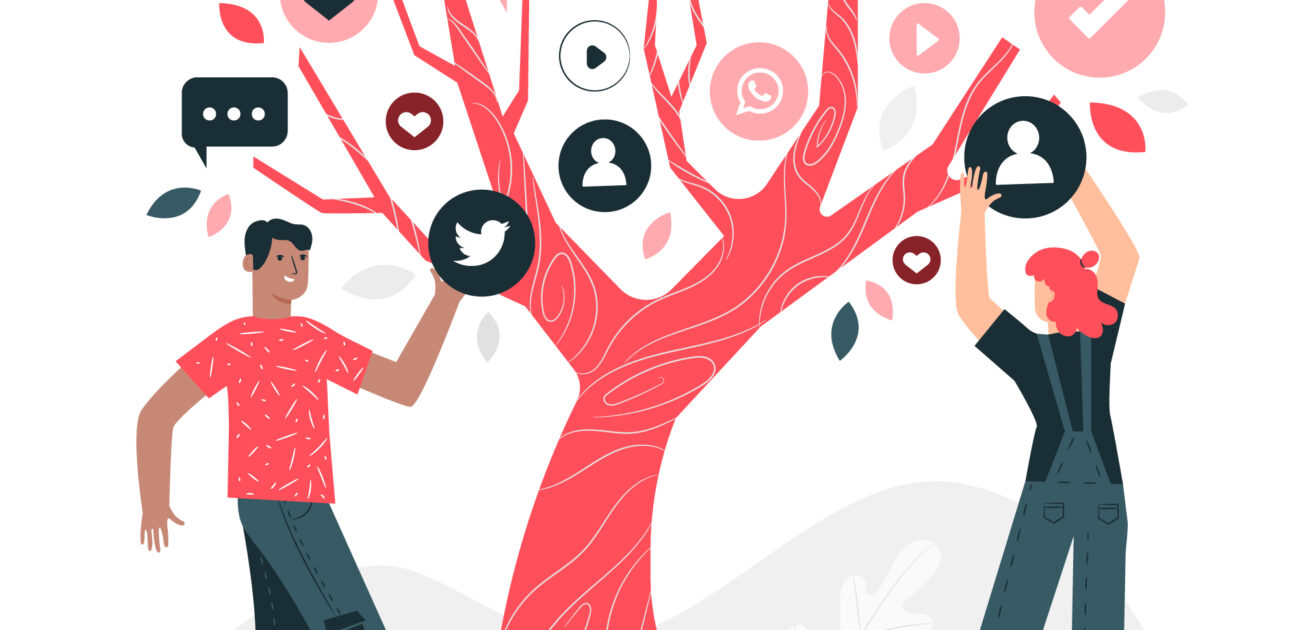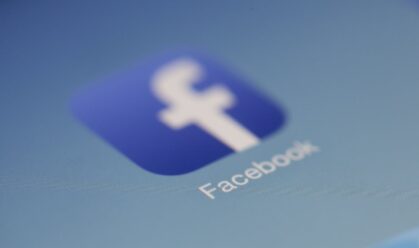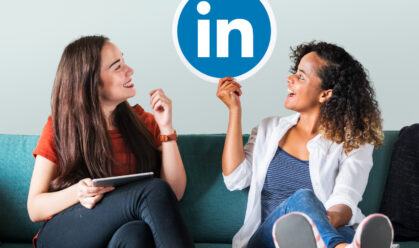Remember when Cinnabon posted that insane tribute to Carrie Fisher? Or when Burger King UK tweeted, “Women belong in the kitchen”?
The internet is littered with examples of brands receiving backlash after failing to read the room.
But for every high-profile failure, there are countless instances where brands got it exactly right when hopping on social media trends.
This article will focus on the second camp, sharing 10 of our favorite examples of brands that used trending subjects to generate social engagement.
1. Duolingo Dunks On Twitter’s “X” Rebrand
Since Duolingo decided to make its cartoon owl mascot somewhat unhinged, it’s been on a crash course with another high-profile digital avian: Twitter’s iconic bird logo. So once Elon Musk took the reins at the social media platform and replaced the winged icon with a big letter “X,” Duolingo was unsurprisingly quick to react:
does this make me the alpha bird? pic.twitter.com/OHXmwFTFfT
— Duolingo (@duolingo) July 24, 2023
Why It Worked
If there’s one thing social media users love talking about, it’s changes to social media platforms. Remember all the media attention around Snapchat’s infamous redesign (and subsequent criticism from Kylie Jenner). That made Twitter’s rebranding a real open goal for marketers. And Duolingo, with its sassy brand voice and reputation for producing madcap content, was the ideal brand to capitalize on this moment.
2. Semrush Reacts to The Little Mermaid Trailer
When we think about brands successfully leveraging social media trends, we generally focus on what’s happening on platforms like Twitter and TikTok, which pride themselves on being at the forefront of zeitgeisty conversation.
But the digital marketing tool Semrush proved that it’s equally possible to comment on social trends on a less likely platform: LinkedIn.
When the trailer for the remake of The Little Mermaid dropped, the internet was unanimous in its verdict that the live-action Flounder looked… upsetting.
It quickly became a meme, and Semrush was one of the first brands to hop on the trend with this LinkedIn post that resonated with marketers everywhere.
Why It Worked
This post is a classic example of relatable content that takes a viral trend and twists it to appeal to a niche audience.
3. Wendy’s Joins In With The Bear Memes
For a brief moment in September 2022, the world of social media was awash with memes featuring actor Jeremy Allen White as the sexy chef in The Bear.
As is so often the case, this trend flipped the original image on its head. White’s character, Chef Carmy, is a talented chef grappling with a kitchen meltdown. In contrast, the meme became a chance for posters to hype themselves up for doing the bare minimum – especially anything food-related.
Wendy’s, a pioneer of the whole brands being weird on Twitter movement, was one of many brands to take advantage:
— Wendy’s (@Wendys) September 14, 2022
Why It Worked
Wendy’s demonstrates how it’s possible to take a social media trend that’s somewhat related to your niche and spin it to put your brand at the center of the conversation. Even better, it references one of the most popular items on the Wendy’s menu, the beloved Frosty frozen dairy dessert.
4. Dunkin’ and Ben Affleck (Finally) Join Forces
There are so many images on social media of Ben Affleck looking depressed while holding an astonishing quantity of Dunkin’ products that it feels like the two parties have been collaborating for years.
In reality, they only officially teamed up for the first time for Dunkin’s 2023 Super Bowl spot, in which the actor-director operates the drive-thru lane at a Dunkin’ somewhere in Massachusetts (did you know Ben Affleck is from Boston?).
The ad features the delighted, bemused, and occasionally impassive reactions of the store’s customers, plus a cameo from Affleck’s wife, Jennifer Lopez.
Of course, celeb collaborations are hardly a rarity for Super Bowl campaigns. But this one worked better than most, landing in fourth spot on USA TODAY’s Ad Meter ratings.
Why It Worked
Social media users dreamed up this campaign rather than Dunkin’s marketing team. The Ben-Affleck-loves-Dunkin’ meme has been a thing for years, so it’s no surprise the ad resonated with audiences.
5. Rihanna’s Brands Jump On Super Bowl Performance
Sticking with the Super Bowl theme, Rihanna’s half-time show was as highly anticipated as the big game itself.
Unsurprisingly, brands raced to join the conversation — none more so than the popstar-turned-business-mogul’s own brands, including Savage X Fenty, Fenty Beauty, and Fenty Skin.
As well as adding a dedicated Game Day section to their online stores, they leveraged social media to promote a selection of existing products and new, football-themed releases:
View this post on Instagram
Why It Worked
This was a dream scenario for any social media marketer: a huge, pre-existing online conversation with them at the center. Such was the buzz around Rihanna’s performance that her brands could have posted pretty much anything and still seen a ton of engagement.
6. Airbnb Capitalizes On Barbie Buzz
We can’t discuss social media trends without mentioning one of the biggest viral moments of recent years: the long-awaited cinematic release of Barbie. The movie’s marketing team worked so hard on hype-building stunts that we could have written an entire article dedicated to them — and still had enough left over for a couple of follow-ups.
But one of our favorite examples was the collaboration with Airbnb, which offered fans the chance to stay at the real-world Malibu DreamHouse — complete with access to Ken’s wardrobe, an outdoor dance floor, and an infinity pool with beach views (of course).
@airbnbthe @barbie dreamhouse is back on airbnb. but this time—ken’s hosting. the pink palace has been revamped with maximum kenergy and is ready for guests. booking opens on july 17 at 10am PT. 🛼 #barbie #airbnb #kendreamhouse don’t miss #BarbieTheMovie only in theaters july 21.♬ original sound – airbnb
Why It Worked
With so much noise around Barbie, there was no guarantee that even a huge name like Airbnb would cut through. So the brand developed a suitably eye-catching campaign that allowed fans to dream of living like their hero for a day.
7. Glossier Presents Lower-Key Barbie Tie-In
We’ve already noted that many brands jumped on the Barbie hype train with big-money campaigns ahead of the movie’s launch.
Still, others demonstrated that making a splash was possible without blowing your marketing budget. For instance, Glossier — which, as far as we can tell, wasn’t one of Barbie’s dozens of official brand partners — enjoyed success with a far more low-key strategy.
It was a basic concept: Glossier posted a bunch of TikToks featuring pink beauty products, accompanied by the movie’s “Hi Barbie” audio clip.
@glossier It’s Glossier pink 🌸💗🎀👛 #glossier #barbiecore #glossierpink #glossieraesthetic ♬ Hi Barbie Hi Ken Barbie Movie Only In Theaters – Barbie Movie
Why It Worked
Glossier risked being shut out of the conversation because it wasn’t an official Barbie marketing partner (unlike rival beauty brands such as Nyx makeup and Truly skincare). Instead, it worked smarter, not harder, with this simple campaign that evoked the movie’s pink-with-everything aesthetic.
8. Netflix Leverages TikTok Dance Trend in Wednesday Announcement
Wednesday was a major viral moment, not least because fans flooded TikTok to recreate actor Jenna Ortega’s iconic dance sequence, soundtracked by a remixed version of Lady Gaga’s 2011 track Bloody Mary.
The trend generated so much traction that Gaga even made her own version.
@ladygaga BLOODY WEDNESDAY #fyp ♬ original sound – heyy
So when Netflix confirmed they renewed the show for a second season, it made sense for the streaming platform to jump on the trend by using the same song in their announcement.
More torture is coming. Lucky you. pic.twitter.com/t11LptFk7e
— Wednesday Addams (@wednesdayaddams) January 6, 2023
Why It Worked
Like the Ben Affleck and Dunkin’ collab we discussed earlier, this is an example of a brand drawing inspiration from its audience. Fans had already made the Bloody Mary remix a key piece of the show’s online presence. Why go out of your way to start a new trend when a perfectly good one already exists?
9. Later Has Fun With Apple’s AR Headset Launch
When Apple unveiled its first augmented reality headset, social media users were impressed and a little freaked out. Honestly, are we really prepared for a world of “spatial computing?”
As is often the case, the launch generated a ton of memes, with one of our favorites coming from the social media marketing platform Later.
View this post on Instagram
Why It Worked
Often, when brands hop on social media trends, they aim to generate impressions and engagement. In contrast, Later accompanied its post with an action-oriented caption pointing audiences toward its onsite educational resources. Remember: going viral doesn’t have to mean ignoring your marketing goals.
10. US Naval Institute Taps Into Fascination With Chinese Spy Balloon
Jumping on trends isn’t just for consumer brands and marketing tools.
In arguably our most unusual example of a brand hopping on a social media trend, the non-governmental organization US Naval Institute took advantage of reports that a Chinese spy balloon had been shot down over North America to generate a whole heap of engagement with this viral tweet.
Since “Chinese Spy Balloon” is trending: In 1945, the crew of USS New York spotted a sphere that they thought might be a Japanese balloon weapon. The captain ordered it shot down but none of the guns could score a hit. Finally, a navigator realized they were attacking Venus. pic.twitter.com/aKwedtrr2G
— U.S. Naval Institute (@NavalInstitute) February 3, 2023
Why It Worked
Let’s be honest: the Navy isn’t usually front and center of social media conversations. So when a relevant trend (finally) sailed over the horizon, the US Naval Institute took full advantage by adding something new to the story, resulting in thousands of shares and comments.
It shows that hopping on trends doesn’t have to mean responding with a meme.
Are you seeking ideas, advice, and case studies from some of the world’s top social media marketers? Check out our upcoming social media conferences.
Featured image by Freepik.









